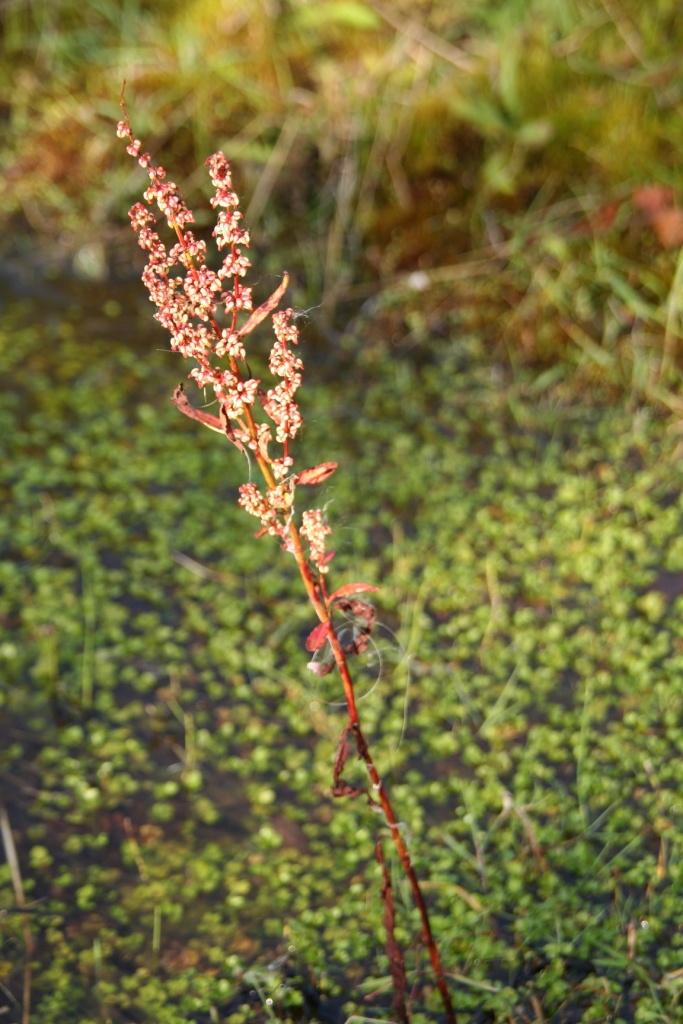Shore dock – a very Celtic weed
“I’ve
spent my life destroying those!”
cried my Chairman (a noted farmer) as we knelt to examine the finer
details
of one of
Deep within the forest
at Newborough lies
the original shoreline of the Cefni estuary and there, patiently
waiting for
the tide to return, lies the shore dock. This is a genus usually given
low
ratings by both farmers and conservationists. But the shore dock is an
exception. This is the world’s rarest dock (there are
probably only a few
thousand in existence) and being scattered from
Shore
dock (Rumex
rupestris) is normally found in the wet seepage on unstable
clay cliffs or the crest of shingle beaches and around the edges of
dune
slacks, but always in open, unstable habitats.
At Newborough, its most northerly location in the
world, it grows as a
relic of former times, of an open landscape of sand and shore and
water. Now
surrounded by trees, it persists in narrow stream channels where minor
slumping
and erosion enabled its survival for decades. More recently, in
response to
declining numbers, forest managers and CCW have resorted to removal of
shading
trees, scarifying the ground and using ponies to graze and puddle the
sites.
Numbers have increased, though the long-term prognosis for the
Newborough
population is uncertain as long as it is denied access to the
shoreline; its
natural seed dispersal mechanism and source of genetic exchange with
its Celtic
neighbours.
My Chairman was convinced. Now all I had to do was show him the even rarer South Stack ragwort!

The shore dock Rumex rupestris is the world's rarest dock. Classed as Endangered in the Vascular Plant Red Data Book (2005) it is found in Anglesey, South Devon, Cornwall and the Isles of Scilly. It also grows in the Channel Islands, Normandy, Brittany, Bordeaux and Galicia and is rare and declining throughout its range. During the last century, the number of mainland UK sites has declined by over 80% and the species is now found in only ten 10km2 squares. Most British populations have fewer than 50 individuals.
The shore dock is listed on Annexes II(b) and IV(b) of the EC Habitats Directive, and is protected under Schedule 5 of the Conservation of Habitats and Species Regulations 2010 and Schedule 8 of the Wildlife & Countryside Act 1981.
For the shoredock Biodiversity Action Plan see:
http://www.ukbap.org.uk/UKPlans.aspx?ID=555
© Crown copyright. All rights reserved. License number 100044910